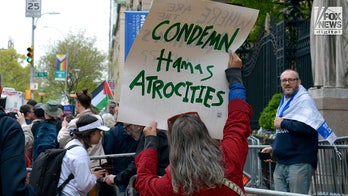
In this July 31, 2010 photo, the New Orleans skyline is seen from the cockpit of a helicopter. (AP2010)
New Louisiana census numbers show how dramatic the post-Katrina population loss has been in New Orleans, with the number of people living in the Crescent City dropping by nearly a third since 2000. And the shift could be bad news for Democrats with redistricting on the horizon.
The 2010 Census shows New Orleans' population at 343,829, down 140,845 from 10 years earlier. Those numbers reflect the city's struggle to get its former citizens to return after the 2005 storm and the years-long loss in population as the city battled with a weak economy, crime and corruption.
"Our progress has always been much bigger than a population number, New Orleans Mayor Mitch Landrieu said in a statement. "Today, our recovery is in a full gallop."
Billions of federal dollars have flowed into the city since the flood waters receded and despite the dwindling numbers, city leaders like Landrieu are looking past the numbers and focusing on their rebuilding effort.
Still, Orleans Parish, once the state's largest, is now the third-most populous parish in Louisiana.
New Orleans' loss could be Baton Rouge's gain as political clout moves to the north and west of the Big Easy.
The state will lose a congressional seat in redistricting this year. State legislative maps will be redrawn too. Both will likely mean a shift in power from New Orleans to the suburbs outside New Orleans and Baton Rouge.
Two parishes just east of the state's capital city added more than 25 percent to their respective populations and East Baton Rouge is now the Louisiana's largest parish with a population of 440,471, up nearly 30,000 over the past 10 years.
The new statistics could lead to a dramatic redrawing of Louisiana's 2nd Congressional District, the only one to remain in Democratic hands. It is currently Louisiana's smallest district geographically, comprising much of the city of New Orleans and hugging the surrounding suburbs. But since its population has fanned out, its demographics will become more diverse as it encompasses a larger -- and less urban -- area.
The Census numbers show much of New Orleans' population decline is among African-Americans and with a population pushing northwest toward Baton Rouge, the 2nd could become much more politically diverse, with the merger of Baton Rouge Blue-Dog Democrats and what's left of the New Orleans black community.
Louisiana's 2nd district flipped back to Democratic control in the 2010 election when Cedric Richmond beat one-term Republican and Vietnamese immigrant Anh "Joseph" Cao. It was one of the rare races that bucked the trend of Republicans winning seats previously held by Democrats. Cao replaced longtime Rep. William Jefferson, currently serving a 13-year federal prison sentence for taking bribes.
But the city's population freefall could make the 2nd district disappear altogether.
The Louisiana Legislature meets in a March 20 special session to redraw district boundary lines for the state House and Senate, the Public Service Commission, state education board, Louisiana Supreme Court, state appeals courts and a U.S. House delegation that will drop from seven members to six.
Since the state must drop a district, some around New Orleans are concerned that the loss of political clout brought on by the Census numbers will lead legislators to dissolve the 2nd district.
The Associated Press contributed to this report.




